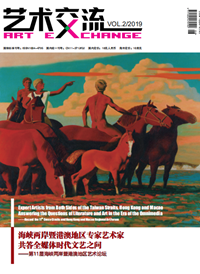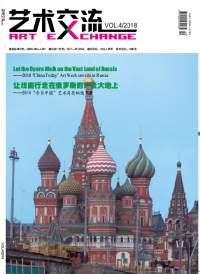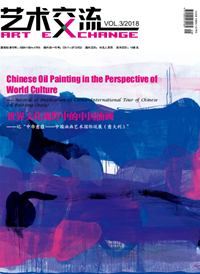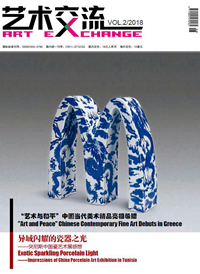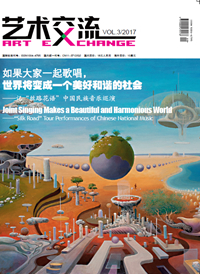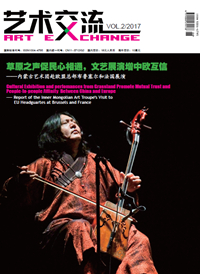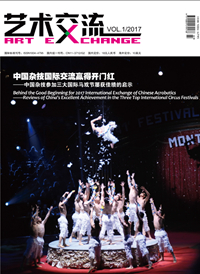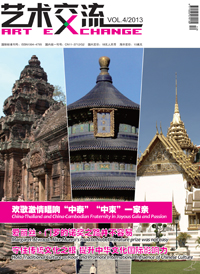At the end of spring auction, Ai Min, manager of Oil Painting Department of Beijing Rongbao Auction Co.,Ltd, remarked,“As to print deal quantity at this spring auction, there will be no great difference between this year and last year”, which reflects the basic achievement of print at the auction market. What factors affect the development of print market? What about the popularity of print collection? What factors determine the price of print?

The Capital’s Morning by Li Hua
While the artistic value of Chinese traditional painting and oil painting has been widely recognized and the sharply increasing price at auctions has attracted numerous Chinese collectors and investors as the main focus, the print art, one of the most important genres of painting art, is only a margin of the oil painting and sculptures at the secondary auction market. Last year, various print-related events took place in great succession, including the project “2011 Chinese Print Year” promoted by China Artists Association, over 20 exhibitions and seminars, and particularly the opening of the 1st Beijing 798 International Print Fair. However, all above could not cover the embarrassing lukewarm situation of print market for recent years. In comparison with the oil painting, the number of print collectors and investors is rather limited.
Whether in the primary market or in the secondary market, the domestic print market in China still remains to be lukewarm. The reason for this probably is that Chinese people lack knowledge of its artistic value and the value in collection and investment. The duplicability of print art may also lead people into a misunderstanding of its value. As a matter of fact, every piece of publication and print, despite its plurality, is rather different from each other. The simple reproduction of machine cannot be paired with limited hand-made reproduction. In other countries, we often find that an artist has made great achievements in both oil painting and print, while many Chinese print-major students will be engaged in oil paining or acrylic painting creation upon graduation. Wu Hong, a teacher of Print Department of Central Academy of Fine Arts, remarked, “Some kinds of print arts are conditioned by machines. For example, the materials and devices for lithograph are so expensive that students are obliged to turn to other creation.” It is indeed one of the reasons why print creation and market are restricted.
As for the future prospect of Chinese print development, some might ask whether Chinese print will become a fashion like Andy Warhol in USA and bring about the great value on the market. Nowadays, people like judging whether a market is at the peak or not. Since there are so many print festivals, does it indicate the market on the rise? Actually, it is only their subjective expectations. With its own law of nature, the art market will not harvest until the grain is mature. Therefore, no matter at the primary or secondary market, there is still a long way to go before seeing the maturity of print art.
While the artistic value of Chinese traditional painting and oil painting has been widely recognized and the sharply increasing price at auctions has attracted numerous Chinese collectors and investors as the main focus, the print art, one of the most important genres of painting art, is only a margin of the oil painting and sculptures at the secondary auction market. Last year, various print-related events took place in great succession, including the project “2011 Chinese Print Year” promoted by China Artists Association, over 20 exhibitions and seminars, and particularly the opening of the 1st Beijing 798 International Print Fair. However, all above could not cover the embarrassing lukewarm situation of print market for recent years. In comparison with the oil painting, the number of print collectors and investors is rather limited.
Whether in the primary market or in the secondary market, the domestic print market in China still remains to be lukewarm. The reason for this probably is that Chinese people lack knowledge of its artistic value and the value in collection and investment. The duplicability of print art may also lead people into a misunderstanding of its value. As a matter of fact, every piece of publication and print, despite its plurality, is rather different from each other. The simple reproduction of machine cannot be paired with limited hand-made reproduction. In other countries, we often find that an artist has made great achievements in both oil painting and print, while many Chinese print-major students will be engaged in oil paining or acrylic painting creation upon graduation. Wu Hong, a teacher of Print Department of Central Academy of Fine Arts, remarked, “Some kinds of print arts are conditioned by machines. For example, the materials and devices for lithograph are so expensive that students are obliged to turn to other creation.” It is indeed one of the reasons why print creation and market are restricted.
As for the future prospect of Chinese print development, some might ask whether Chinese print will become a fashion like Andy Warhol in USA and bring about the great value on the market. Nowadays, people like judging whether a market is at the peak or not. Since there are so many print festivals, does it indicate the market on the rise? Actually, it is only their subjective expectations. With its own law of nature, the art market will not harvest until the grain is mature. Therefore, no matter at the primary or secondary market, there is still a long way to go before seeing the maturity of print art.

Wu Guanzhong's work



